Accountability for international crimes committed in Ukraine between 2014–2018
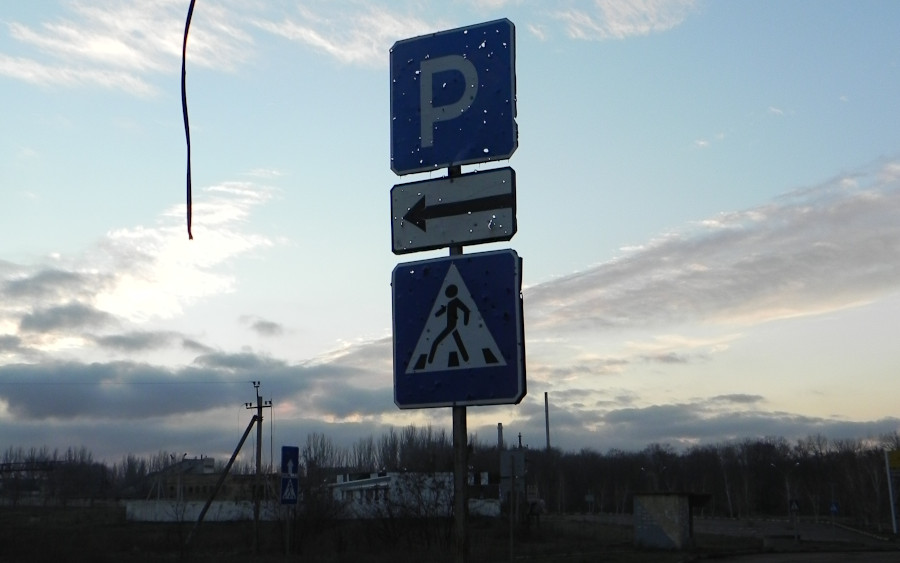
CONTENTS
List of abbreviations
1. Summary
2. Sources
3. Classification of alleged crimes
4. Classification and description of victims of the armed conflict
4.1. The dead and wounded
4.2. Missing persons
4.3. Persons unlawfully imprisoned and detained
• Violations by the IAG (in the non-controlled by the government areas)
• Illegal deprivation of liberty on the part of LAG (on government controlled areas)
4.4. Victims of torture and ill-treatment
4.5. Victims of sexual and gender-based violence
4.6. Victims of violations of the human dignity, civilians and the military
4.7. Prisoners in penal institutions in non-controlled by the government territory
4.8. Victims of persecution in non-controlled by the government territory of identifiable groups based on membership in the group
• Roma • Members of LGBTIQ community • Believers of churches that are not recognized by Moscow patriarchate
4.9. Persons who lost their homes and other property due to hostilities. the damage wrecked upon the settlements of Donetsk and Luhansk regions, affected by the armed conflict
4.10. Internally displaced persons
5. Prerequisites for moving beyond a preliminary examination and initiating an investigation
5.1. Jurisdiction
5.2. Admissibility
5.2.1. Complementarity
5.2.1.1. Unwillingness of Ukrainian state authorities to investigate or prosecute the crimes
5.2.1.2. Inability of Ukrainian state authorities to investigate or prosecute the crimes
5.2.2. Gravity
5.3. Interests of justice
6. Conclusions
List of abbreviations
ATO – Anti-Terrorist Operation;
CL – contact line;
CP – check-point;
ECHR – European Convention on Human Rights;
ECtHR – European Court of Human Rights;
GC – Geneva Convention(s) of 12 August 1949;
HRMM – UN Human Rights Monitoring Mission in Ukraine;
IAF – Illegal Armed Formations;[1]
ICC – International Criminal Court;
ICTY – International Criminal Tribunal for the former Yugoslavia;
IDPs – Internally Displaced Persons;
IHL – International Humanitarian Law;
KHPG – Kharkiv Human Rights Protection Group;
LAF – Legal Armed Formations;[2]
MMP – Main Military Prosecution;
NPU – National Police of Ukraine;
OSCE – Organisation for Security and Cooperation in Europe;
RS – Rome Statute;
SP – NGO ‘Shore of Peace’;
SSU – Security Service of Ukraine;
UAF – Ukrainian Armed Forces.
1. Summary
Civil organisations “Kharkiv Human Rights Protection Group” and Shore of Peace (Lutsk) presents this review containing a variety of information about the alleged crimes committed during the armed conflict in eastern Ukraine between 2014-2019. KHPG and SP find that the crimes enumerated in this communication constitute crimes against humanity and war crimes within the jurisdiction of the ICC. There are reasonable grounds to believe that these crimes qualify as crimes against humanity under articles 7 (1) (a), (e), (f), (g), (h) and (i); and as war crimes under Article 8(2) (a) (i), (ii), (iii), (iv), (vi), (b) (i). (ii), (iv), (v), (ix), (xxi), (xxii), (xxiii), (c) (i), (ii), (e) (i), (ii), (iv) and (vi) of the RS. The report includes information on all the crimes which is supported by the evidence collected by us and prerequisites for starting an official investigation. On the whole, the collected information indicates, in our opinion, the presence of all the conditions necessary for the ICC Prosecutor to start the official investigation of these crimes.
2. Sources
The sources of information that were used in preparation of this review are as follows:
a) Daily official reports on the situation in the area of hostilities, human casualties, the extent of destruction, etc.; reports from other information resources, including the local ones, about the conduct of hostilities;
b) Daily reports of the HRMM, reports of international and national human rights organizations, such as Amnesty International, Human Rights Watch, Human Rights Centre «Memorial» (Moscow), Ukrainian Helsinki Human Rights Union and other human rights organisations in Ukraine;
c) Official replies to information requests obtained in accordance with the Law of Ukraine «On Access to Public Information», which were sent to the police and national authorities on the territory under the control of the government in eastern Ukraine;
d) Monitoring trips to Donetsk and Luhansk regions to the areas under the control of the government of Ukraine for the purposes of verifying and following up on the official replies received in response to information requests; interviewing victims and witnesses of human rights violations; and collecting photo and video evidence;
e) Relevant information channels that regularly publish information on the situation in the zone of the armed conflict;
f) Information provided by informants residing in the territory, uncontrolled by the government;
g) Materials of cases initiated by KHPG’s Strategic Litigation Centres as the result of the human rights violations in the conflict zone;
h) SP and KHPG databases.
3. Classification of alleged crimes
We assume that the following crimes against humanity and war crimes have been committed, qualified under Articles 7 and 8 of the Rome Statute of the International Criminal Court during the armed conflict in eastern Ukraine between 2014-2019[3]:
Murder (extrajudicial killings, torturing to death, killings of civilians as a result of isolated attacks), articles 7 (1) (а), 8 (2) (a) (i), 8 (2) (с) (i) RS;
Attacks on the civilians and the destruction of civilian objects (intentional attacks, indiscriminate attacks, deaths as the result of explosions – mines, trip wire etc., the destruction and damage of buildings and infrastructure), article 8 (2) (b) (i), (ii), (iv), (v), (ix), (e) (i), (ii), (iv) of the RS;
Use of protected persons as «human shields», article 8 (2) (b) (xxiii) of the RS;
Imprisonment or other severe deprivation of physical liberty in unlawful places of detention (separately in relation to military personnel and civilians), article 7 (1) (е) of the RS;
Torture and inhuman treatment (separately in relation to military personnel and civilian). articles 7 (1) (f), 8 (2) (c) (i) of the RS;
Sexual and gender based violence, articles 7 (1) (g), 8 (2) (b) (xxii), (e) (vi) of the RS;
Enforced disappearances, article 7 (1) (i) of the RS;
Outrages upon personal dignity (parades of captives, forcing detainees to eat insignia of their military uniforms, forcing detainees to reinter decomposed corpses of the Ukrainian military servicemen, etc.), article 8 (2) (b) (xxi), (с) (ii) of the RS;
Persecution against an identifiable group on discriminatory grounds (Roma, members of the LGBT community, religious believers who do not recognize the Moscow Patriarchate), article 7 (1) (h) of the RS;
Crimes committed against convicts / prisoners in the non-controlled by the government territory, article 8 (2) (а) (i), (ii), (vi), (b) (iv), (xxiii), (с) (и), (ii), (iv) of the RS.
4. Classification and description of victims of the armed conflict
To the victims of armed conflict and, in particular, the above crimes, we include the following categories:
– the dead and wounded, military and civilians, and members of their families;
– the missing, military and civilians, including victims of enforced disappearances, and members of their families;
– persons unlawfully imprisoned and detained, and members of their families;
– victims of torture and ill-treatment;
– victims of sexual and gender-based violence;
– victims of violations of the human dignity, military and civilians;
– prisoners in penal institutions in non-controlled by the government territory;
– victims of persecution in non-controlled by the government territory due to the membership in the group:
Roma;
members of the LGBT community;
believers of churches that are not recognized by Moscow Patriarchate;
– persons who have lost their homes and other property as a result of hostilities.
– internally displaced persons.
We believe that in terms of human casualties, one should also consider the damage caused to the towns of Donetsk and Luhansk regions in the form of destruction of housing facilities and infrastructure – heat, energy, gas and water supply, educational, medical, commercial, industrial, social, cultural, religious buildings, bridges, roads, land, etc.
The following is a brief description of the victims of the conflict.
4.1. The dead and wounded
According to the HRMM’s data, during the entire period of the conflict, from 14 April 2014 to 15 November 2019, at least 3,046 civilians were killed: 1,807 men, 1055 women, 98 boys, 49 girls and 37 adults whose sex is unknown. In addition, 298 civilians, including 80 children, were killed by the downing of the civilian plane MH17 on 17 July 2014, bringing the total death toll of civilians to at least 3,344 persons. HRMM estimates the total number of the conflict-related civilian injuries as over 7,000 persons.[4]
According to the results of the monitoring trips carried out during that period by KHPG and SP, the following data on casualties was entered into their respective databases: 3,144 killed and 3,350 injured civilians (KHPG database)[5]; and 9,294 killed and 1,572 injured military servicemen (SP database)[6].

We have documented 108 armed conflict-related murder cases, including 50 civilians and 58 prisoners of war. 83% of the murders were committed in non-controlled by the government territory, 17% – on the controlled territory. 78 cases are related to extrajudicial executions (50% of military and 50% of civilians), 24 persons were tortured to death (23 military and 11 civilians, 19 cases – in uncontrolled territory, 5 – in controlled territory), 6 people were killed by single shots.
For the moment, it is difficult to establish the real death toll. With a high degree of probability, one can argue that the persons gone missing in 2014 and not found until now had been killed or tortured to death.
4.2. Missing persons
The lack of a unified methodology for determining missing persons and coordination between various state bodies led to different estimations of the number of disappearances in the military conflict zone – from several hundred to several thousand people.
On 15 February 2015, the Ministry of Internal Affairs published[7] a list with data on 1,331 missing persons in the military conflict zone requesting to provide any information on the whereabouts of the indicated citizens.
According to NPU, for the entire period of hostilities, more than 7,400 Ukrainians went missing. As of late 2017, more than 1,800 persons were missing.
According to the information of the Directorate of National Police of Ukraine (NPU) in Donetsk region sent in response to KHPG’s information request, from April 2014 till the beginning of 2017, 2,727 persons went missing in the controlled territory of Donetsk region, the fate of 1,053 of them is unknown. According to the data of Luhansk regional civil-military administration, provided in response to KHPG’s information request, since the beginning of the anti-terror operation in the controlled area of the region, 1,205 persons are sought for, 633 persons have been found, the fate of 572 remains unknown.
Fewer missing from the beginning of the military conflict in the east were reported[8] in the end of December 2017 by Vasyl Gritsak, the chairman of the Security Service of Ukraine – 403 people, including 123 military men, members of voluntary battalions and security forces.
The database of CO Mirniy Bereg contains the data on 2,878 missing during the entire period of the military conflict in eastern Ukraine, including 1,425 military, 1,453 civilians, with 56 children among the latter. As of late May 2018, the database contains 1,148 missing persons, of them 150 are military, 998 – civilians, including 33 children. Unidentified dead –152[9].
As of 1 September 2019, KHPG has documented 4,656 cases of disappearances (3,982 men, 659 women and 15 sex unknowns, among them 239 children) in the KHPG database. Out of this number of missing persons, 3,505 persons were subsequently located, including 210 children.[10]
4.3. Persons unlawfully imprisoned and detained
Violations by the IAG (in the non-controlled by the government areas)
In the vast majority of cases of imprisonment and other cruel or unlawful deprivation of physical liberty, irrespective of the specific form of such actions in any form (abduction, including for the purpose of ransom, illegal detention and holding in illegal places, capture of hostages) in the vast majority of cases was not an end in itself, but was combined with torture and other forms of ill-treatment as well as in a number of cases, with the murder of a person (torture to death).
As of 20 July 2018, MMP identified over 3,500 persons that were illegally detained by IAF on the government non-controlled territories of Donetsk and Luhansk regions. Nearly 1,700 persons were civilians, others were military servicemen. Nearly all persons who were unlawfully detained were subjected to torture or inhuman treatment by IAF. Several hundred captives were killed.
The length of the period for detainees varies considerably – some are held for several hours, others – for several months. In most cases, the release depends on factors such as the availability of something for exchange, for example, money.[11]
The motivation for abduction and arresting by armed groups is: a) exchange with detainees held by the government; b) getting some influence on the situation; c) extortion of property or money; d) a source of labour for digging trenches and preparing military barricades; e) opportunist ’arrests’ of people; and f) ’internal discipline’ of the armed groups themselves.[12] With these actions, armed groups continued to execute their power over the population in rude and harsh ways.[13]
On the basis of the collected data, it is possible to conditionally categorize places of detention used by illegal armed groups for the apprehension of detainees in the following categories:
• premises of law enforcement agencies (SSU, MIA, Prosecutor’s Office);
• administrative buildings of local authorities (region, city and district councils, state administrations);
• military enlistment offices and military units;
• office premises;
• private houses;
• hotels, shared households;
• catering facilities (cafes, restaurants);
• enterprises (factories);
• auxiliary buildings (sheds, car boxes, etc.);
• others (drain covers, cages).
Most often detained persons are held in the buildings of law enforcement agencies, administrative buildings of local self-government bodies, premises of enterprises and catering establishments. Taking into account the status of these ’republics’, all places of detention of people on their territory can be considered unofficial, even those that are specially equipped to perform these functions (for example, temporary detention facilities of the internal affairs agencies, pre-trial detention centres).
The captives were detained in the facilities that were unsuitable for the purpose. They were deprived of food, water, the possibility to use the toilet and were denied access to medical assistance. The conditions of detention failed to meet the minimum standards, in most cases the conditions were degrading and humiliating. According to the report of MMP, during 2014–2018, IAF established 120 places of unlawful detention, which were used for detention of the captured Ukrainian military servicemen, civilians, including the journalists and volunteers.[14]
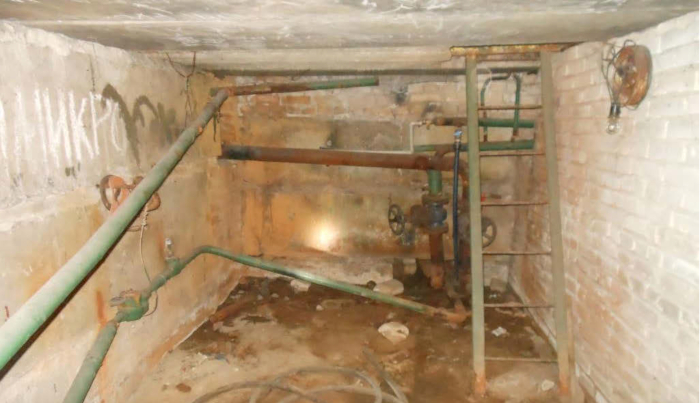
The SP database contains information on 204 places of unlawful detention: 116 of them in Donetsk region and 88 in Luhansk region, with total number of detainees 3,736 persons, including 2,082 civilians and 1,654 military personnel[15]. In particular, the following detention facilities with the highest number of prisoners were documented:
building of the Directorate of the Security Service of Ukraine (62 Shchorsa street, Donetsk) – more than 225 persons;
former military unit No. 3037 (1 Kuprina street, Donetsk) – more than 190 persons;
Izolyatsia plant (3 Svetlogo Puti street, Donetsk) – more than 190 persons;
Temporary detention facility near Yuzhnaya bus station (Donetsk) – more than 400 persons;
Temporary detention facility of Snezhnyansky Municipal District Department of the Ministry of Internal Affairs of Ukraine in Donetsk region – more than 190 persons;
building of the Directorate of the Security Service of Ukraine (79 Sovetskaya street, Luhansk) – more than 200 persons.
Long-lasting detention in inhuman conditions combined with severe torture have harmful consequences for mental and, in many cases, physical health of victims, and are very likely to persist for a long time. Also, the families of those who were killed will suffer from the loss of their relatives for many years, if not always.
Illegal deprivation of liberty on the part of LAG (on government controlled areas)
Among the documented cases of illegal detention, eight occurred on the government controlled area, from the representatives of the volunteer battalions and the National Guard of Ukraine. According to eyewitnesses, about 40 detainees are reported. Among the reasons for the detention were the following: suspicion of sympathy with the Russian-separatist forces; journalists and volunteers suspected of espionage; abduction in order to obtain ransom. In addition, monitors know about other categories of victims, who, however, refused to testify because of the fear of retaliation.[16]
In addition, some activists are detained by Ukrainian law-enforcement and voluntary battalions, who allegedly committed crimes under article 258 (terrorism) of the Criminal Code. The HRMM was not provided with any explanation as to the exact location of those detainees. It was also reported that the Right sector, in coordination with the UAF, detained a leader of one of the armed groups in the Donetsk Oblast on June 25.[17]
A lot of information on human rights violations came from volunteer battalion fighters. According to the results of monitoring visits to Stanytsia Luhanska, KHRG gained information about several places where local residents were illegally held by the volunteer battalions ’Chernihiv’ and ’Tornado’. Among them are: the railway hospital in Nova Kondrashivka, the ’Motobond’ shop, the service station at the entrance to the village, the storage premises in the center of the village, the storage premises of the ’Ksenia’ store.[18]
In general, several dozens of applications were made to law enforcement agencies about the crimes committed by soldiers of the ’Tornado’ battalion. Approximately the same – against the ’Chernigov’ soldiers. Most of the citizens who suffered from so-called ’elimination’, refused to describe their stories in writing, fearing for their safety.[19]
In the course of the struggle with the ’separatists’, almost every resident of the village passed through unlawful places of deprivation organized by ’Tornado’.[20]
Some of the members of the UAF were kept in custody for up to 14 days, during which they were subjected to ill-treatment and released from the mandatory signing of the document that they had no complaints about those who detained them. According to Ukrainian NGOs, many such cases were associated with the Aidar battalion.[21]
UHHRU, ’Truth Hounds’ NGO and KHRG documented the detention of 23 people. This information, obtained from various sources, allows us to conclude about the practice of detaining the local population of Donetsk and Luhansk Oblasts in 2014 and 2015 on suspicion of ’separatism’.[22]
After the return of a part of the settlements of Donetsk and Luhansk Oblasts that were previously captured by armed groups, from the middle of April to August 16, 2014, more than 1,000 people suspected of collaborating with armed groups or attaching to them were detained by the SSU, territorial battalions at the Ministry of Defense or special battalions at the Interior Ministry.[23] HRMM is still very concerned about the systematic reporting of people held by the SSU in unofficial places of detention that are not available to the National Preventive Mechanism and international organizations. Reliable messages from victims and their relatives indicate a widespread behaviour pattern in several units of the SSU. From the very beginning of the armed conflict, a number of unofficial detention centres, often located in the basements of the buildings of the regional departments of the SSU, turned out because of a large number of reliable reports of the victims and their relatives.
While the perpetrators of most cases in 2014 and early 2015 were volunteer battalions (often in cooperation with the SSU), the cases from the end of 2015 and beginning of 2016 are mostly related to the SSU. Most of these cases involve detention without communication with the outside world in unofficial places of detention, where torture and ill-treatment are constantly practiced as methods of obtaining confessions, information, intimidation or even punishment of victims. The SSU continues to deny the practice of holding in custody without connection to the outside world, and even the very existence of unofficial places of detention. Similarly, the SSU does not provide any information on the location and fate of certain missing persons. Officials of the SSU continue to consider the facts documented by the HRMM as ’groundless insinuations’.[24]
4.4. Victims of torture and ill-treatment
Since the beginning of the conflict (official date – April 14, 2014) and until the end of 2015, tortures in the Luhansk and Donetsk Oblast were massive. This was due to the acute phase of conflict and the instability of the control over the areas. After the adoption of the Minsk accords in February 2015 and the reduction of the intensity of the conflict, the number of torture of detained persons has decreased and is not so massive.
In their reports, the OHCHR[25], the Amnesty International, the Human Rights Watch, and other international organisations pointed out the massive nature of torture committed by both parties to the conflict.
The number of people who have been tortured by both the IAG and the LAG (both representatives of volunteer battalions and the SSU) varies in the data. According to the Ukrainian authorities, 3224[26] people were released from the captivity by IAG, according to Irina Gerashchenko (a representative of the Ukrainian side in the negotiation process in Minsk) – each of the prisoners was subjected to torture by the part of the IAG.[27] These data are correlated with the data of independent observers, in particular, the OHCHR indicates the following: «Thousands have gone through these places of detention, undergoing inhumane conditions... with torture and ill-treatment.»[28]
During the monitoring visits to populated areas along the contact line and in the course of lawyers’ communication with former prisoners, more than 3,000 cases of torture of prisoners (military and civilians) committed by illegal armed groups were recorded in the database of MB. In general, approximately 6,000 people (their data are contained in the database of MB) passed through the places of detention of illegal armed groups, the conditions of detention in which can amount to torture and ill-treatment.
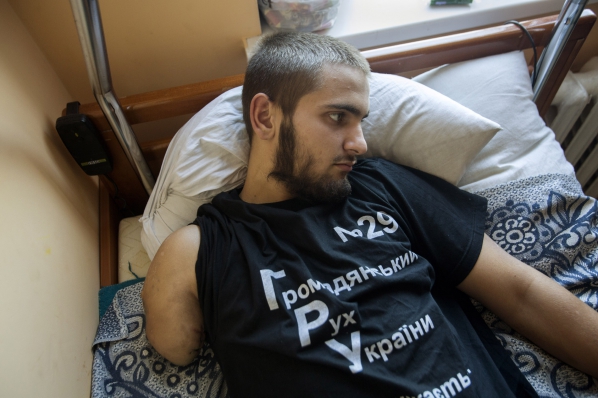
Much less is known about torture committed by illegal armed groups due to the lower number and high level of latency. Ukrainian Helsinki Human Rights Union, non-governmental organization Truth Hounds and KHPG have documented cases of detention of 23 persons by the Ukrainian security forces on the basis of data of 20 interviews conducted with victims and witnesses of the events, as well as photos and documents passed over by them[29]. Out of the 23 detainees 19 were victims of torture and ill-treatment. Among the documented arrests, only in three cases were those arrested involved in violent actions aimed at overthrowing the Ukrainian authority. In other cases, the arrested were former participants of non-violent rallies or civilians who had nothing to do with political events.
The SSU deny all the allegations of torture and ill-treatment, using rhetoric: «the criminals claim about torture to not take a responsibility for their crimes».[30]
However, international organizations have repeatedly reported receiving information about torture committed by SSU employees. Thus, the Subcommittee on Prevention of Torture (SPT) of the UN Committee Against Torture stated in its report on the visit to Ukraine in 2016 the following:
“34. The Subcommittee has received numerous and serious allegations of acts that, if proven, would amount to torture and ill-treatment. Persons interviewed by the Subcommittee in various parts of the country have recounted beatings, electrocutions, mock executions, asphyxiations, acts of intimidation and threats of sexual violence against themselves and their family members. In the light of all the work done and experience gained during the visit, the Subcommittee has no difficulty in concluding that these allegations are likely to be true.
35. Many of the above-mentioned acts are alleged to have occurred while the persons concerned were under the control of the State Security Service or during periods of unofficial detention. In such cases, detainees accused of crimes relevant to the armed conflict in eastern Ukraine, such as offences under articles 109-115, 258, 260-261 and 437-438 of the Criminal Code, are alleged to have been tortured in order to extract information regarding their involvement or that of their associates in “separatist” activities and to identify armed groups’ military positions. The Subcommittee also understands that, in some cases, acts were committed by private individuals or volunteer battalions with the consent or acquiescence of public officials.”
HRMM permanently reports on the torture of those detained in its periodic reports. Relevant examples are given in the reports nos. 8, 9, 10, 11, 12, 20, 21 and others.
4.5. Victims of sexual and gender-based violence
Most cases of sexual violence associated with an armed conflict in the east of Ukraine occurred in the context of depriving people of their freedom by legal and illegal armed groups. In such cases, both men and women were subject to sexual violence. Beating and electrocution of the genital area, rape, threats of rape, and forced nudity were used as methods of torture and ill-treatment to punish, humiliate, or to obtain confessions. In addition, to increase the pressure, perpetrators of crimes also threatened with detention, abduction, rape, injury or murder of relatives of victims, especially their children and wives. In most cases, on the territory controlled by illegal armed groups, sexual violence was also used to force persons deprived of their liberty to give up their property or perform other actions that the perpetrators require as an obvious condition for their safety and release. Most of these cases occurred in 2014-2015. At the same time, for today, there is information available that indicates that such practice still persists on both sides of the contact line.
The highest risks of suffering sexual abuse are associated with the detention of a person, however there are also reported cases of sexual abuse against the civil population, especially against women in the area of the contact line as well as in the territories under control of volunteer battalion fighters and at checkpoints of illegal armed groups.
The reason for the increase in cases of sexual violence is the deterioration of the economic situation, the impoverishment of the majority of the population, which forced many women to engage in the so-called “sex-for-food”, especially in the territories affected by the conflict.
4.6. Victims of violations of the human dignity, civilians and the military
We have documented the following types of abusive and degrading treatment qualified as attack against human dignity: marches of prisoners, accompanied by crowd abuse; confinement in premises with inadequate conditions (lack of proper conditions and place for sleeping and eating, lack of toilet, etc.); forced nudity or forcing men to wear women’s clothing, all sorts of hard (unpaid) work, including the arrangement of military installations; coercion to observe torture or rape of others; coercion to illegal actions connected with state symbols and military insignia, such as burning, eating or other actions against state symbols, forcing to collect and dismember the bodies of dead people (civilian, military). All the cases of coercion recorded by us were performed under the threat of using weapons or physical violence. By their actions, the militants of illegal armed groups demonstrated their superiority over the detainees.
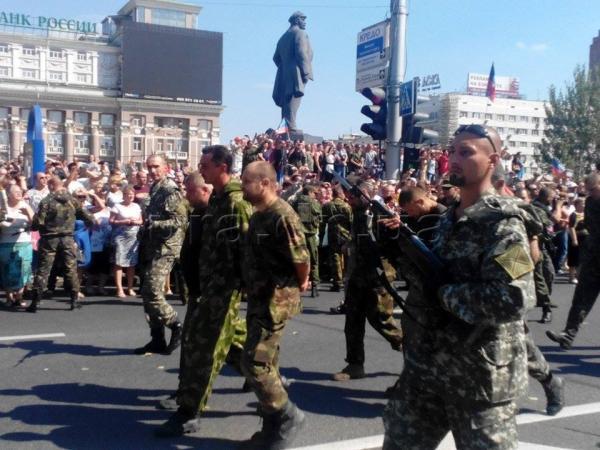
During the armed conflicts the conflicting sides always have to differentiate between the civilians and combatants, civilian and military objects. The Geneva Conventions and their Additional Protocols and RS prohibit the “attacks” on the “protected” objects and “protected” people. No “protected” object or person is to be harmed.
The international law, in particular, the Rome Statute of ICC, defines several obligations of the parties concerning the deprivation of freedom. Any negligence concerning those obligations, on one hand, leads to a violation of the rights of the captives, and, on the other hand, leads to a war crime. Undeniably, places to eat and toilet are among the most important for the detained persons. Thereforeб the deprivation of such conditions and humiliating consequences of their absence are obvious examples of degrading treatment, which is an element of violation of human dignity.
It should be noted that the offenders (armed members of IAF) were essentially aware that they were committing crimes concerning the prisoners/captives. They also understood that their actions were performed in the context of the armed conflict and were directly connected to it. To hide the facts of the criminal actions concerning the prisoners/captives the offenders did not allow the representatives of the international organisations, including OSCE and International Committee of the Red Cross to visit illegal detention centres.
4.7. Prisoners in penal institutions in non-controlled by the government territory
In August-December 2014, the illegal armed groups seized 28 penal institutions in non-controlled by the government territory; as of November 1, 16,200 people were held therein.
Some of these institutions were subject to regular artillery shelling. Repeatedly, shrapnel of shells hit their territory, and sometimes they landed right on the buildings of penal institutions and pre-trial detention centres. As a result of such attacks, convicts died, there were also wounded. Without being actually able to leave the dangerous zone and feeling their helplessness, they lived under shelling for months. Those who were kept in the cells could not even go down to the bomb shelter, because no one took them there. During the heavy shelling, penal institutions administration was hiding, leaving to fate the prisoners locked in cells.
The illegal armed groups did not provide convicts with food, which lead to famine striking the majority of penal institutions. In 2015, the majority of penal institutions were not heated in winter. The convicts bought cast-iron stoves at their own expense, while at the same time, persons sentenced to life imprisonment were not even allowed to use them. They made bonfire in the cells using household items: wooden furniture, clothes, at least to boil water. The walls were covered with frost, the water was freezing, and the temperature plunged to zero. There were periods when there was no light and water supply for weeks. Convicts were limited in the amount of water they could drink. In addition, they could not carry out hygienic procedures, and cells and lavatories were filled with unbearable stench from the sewerage. No medical assistance was provided.
Physical force was often unlawfully used against convicts. Feeling their complete impunity, the members of illegal armed groups could beat a person to death, leave without clothes on the street in winter for the whole day or unleash the dogs.[31]
Holding the persons in custody on the temporarily occupied territory is illegal. However, the absence of the reasons to hold them in custody under Ukrainian legislation is not an obstacle for the occupation authorities, so the persons convicted by the courts of Ukraine before the start of the occupation keep serving their sentences on the occupied territory. Moreover, the persons who had the status of suspects, defendants but were not convicted yet and were held in custody at the start of the occupation are also in the places of the deprivation of liberty. The Ukrainian state can only indirectly influence the detention of individuals in the places of non-freedom on the occupied territory because of the absence of Ukrainian state authorities on that territory. [32]
Conditionally the persons in custody could be divided into following groups:
Those who were convicted and whose sentence entered into legal force before ATO;
Those who were convicted but whose sentence didn’t enter the force before ATO;
Those who were not convicted but whose case was in a first-instance court;
Those who were undergoing pre-trial investigation at the moment of start of the ATO;
Those who were detained and/or convicted members of IAF.
Each of the groups has the peculiarities of its legal status. For the first group of persons whose sentence entered into force the issue of counting of their time spent in custody on the occupied territory to the terms of their sentence is especially relevant, as well as applying to them the Law no. 838-VIII “On amending the Criminal Code of Ukraine to improve the procedure for enrolment by the court of the term of pre-trial detention to the term of sentence” (also known as the “Savchenko law”), early release, amnesty. On the other hand, it is the least vulnerable category of the convicts. They were already convicted, and although there were attempts to review their sentences, in general they continue to serve their sentences established by Ukrainian courts.
Four other groups more or less depend on the quasi-judicial bodies of the unrecognized republics. Since Ukrainian courts left the case materials in the occupied regions during the evacuation, IAF could possess the documents and continue their quasi-judicial review. Only in some of the courts of Luhansk region the employees burnt down the criminal and civil case files that were on consideration. Sometimes the cases of the detainees and accused persons remain on the territory controlled by the government and the persons themselves – on the uncontrolled territory. In such cases the quasi-courts reviewed the materials of the proceedings at their discretion, to only consider the cases. There were documented instances when the process of consideration of a case went on in absence of the witnesses, or, in another case, the suspect was offered to plead guilty in full to have a chance to go free, because the time he spent in custody already exceeded the term of punishment envisaged for the crime he was charged with.[33]
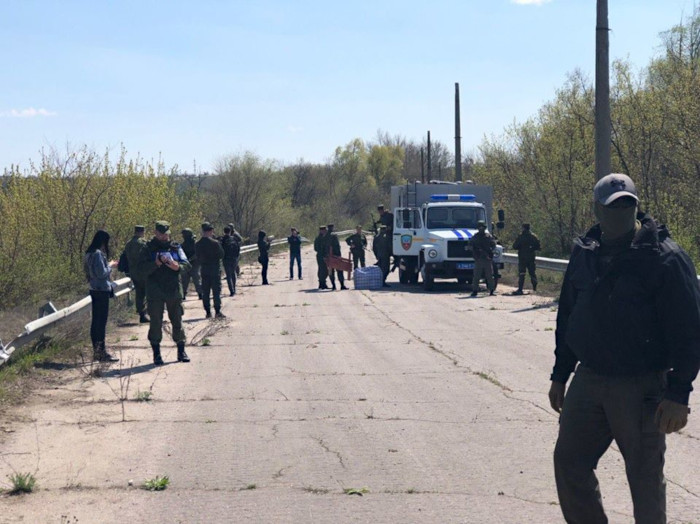
In view of the members of IAF, all the convicts, accused persons, suspects, regardless of the stage of consideration of their cases, are in their jurisdiction. Those who originate from Donetsk or Luhansk regions are called “citizens” of the unrecognized republics and they are offered to receive the local “passports”. The administration of PI usually “loses” the Ukrainian passports to implement the psychological pressure on the convicts, threatening them. The status of such persons under Ukrainian legislation is undefined. Therefore, the common problem of all groups of persons in custody on the occupied territory is their unregulated legal status.
In general, it can be argued that there is a mass violation of the right of prisoners in the ORDLO to liberty, access to justice and the lack of justice.
4.8. Victims of persecution in non-controlled by the government territory of identifiable groups based on membership in the group[34]
Roma
According to the data of UNHCR, that are based, in their turn, on information received from the Roma non-governmental organizations of Ukraine, the number of Roma who left their former residence in the combat zone is estimated at around 6,000 people.
The escape of the Roma from the territory occupied by the «militias» was caused not only by fear of dying from shelling. The lawlessness, arbitrariness and violence of the «militias», sanctioned by the authorities of unrecognized republics, put the Roma at as much risk, and began even before massive hostilities. There were documented cases of arbitrary detentions, robberies, beatings and even murders, as well as real bashing of Roma houses.
Members of LGBTIQ community
All the inhabitants of the territory of the so-called DNR and LNR are at risk of aggression by the armed groups in a situation of lawlessness and impunity, however, to LGBTI the militants pose a particular and real threat. According to an eyewitness, it was «the territory of anarchy, anything can be done to you, the risks increase to the level when they can just shoot you». The majority of respondents stated that there was a threat to life and health, and danger in case of return to the so-called DNR and LNR: «Parents no longer invite me because they fear me. I am not going there because I am afraid for my health». In addition, homophobic actions of the armed militants provoke homophobic aggression in those who previously had a neutral attitude to LGBTIQ.
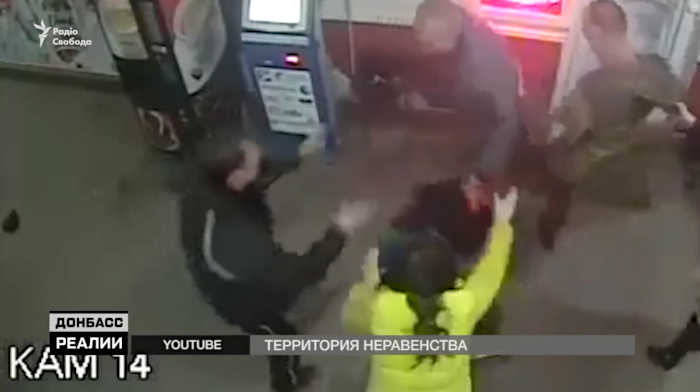
If the armed men learned about the orientation of a person, he was taken «to the basement, placed there for intimidation, ransom and free labour. In the basement, they were humiliated and insulted». Former residents of the Donetsk region reported that «almost everyone, if not paid ransom for to be taken out from the basement, was sent to the trenches».
Believers of churches that are not recognized by Moscow patriarchate
The illegal armed groups have openly expressed their belonging to Orthodoxy and began to repress representatives of Protestant and Catholic churches and Orthodox believers who do not recognize the Moscow Patriarchate. Part of the priests of the Ukrainian Orthodox Church of the Moscow Patriarchate in one way or another supported the illegal armed groups in carrying out this campaign against other churches.
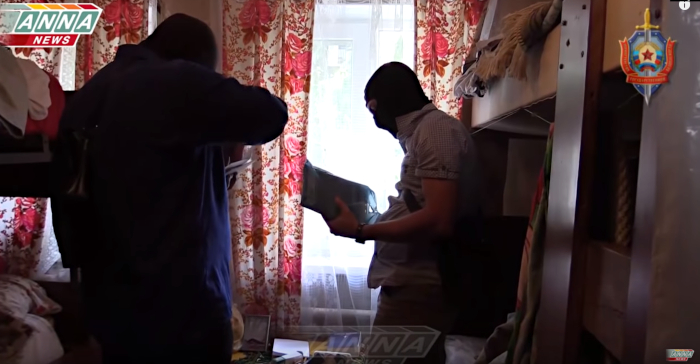
Many priests were beaten, and several priests of the illegal armed groups were even killed. The list of examples of religious persecution can be continued. These examples prove that non-Orthodox believers living in the territories of the armed conflict in Ukraine face widespread and systematic persecution by the illegal armed groups.
4.9. Persons who lost their homes and other property due to hostilities. the damage wrecked upon the settlements of Donetsk and Luhansk regions, affected by the armed conflict
One of the reasons for death and injury of civilians and destruction of homes and infrastructure is the placement by the illegal armed groups of its artillery in residential areas of the settlements near hospitals, schools, kindergartens, etc. and firing from there at positions of legal armed units. Some legal armed units act symmetrically. The presence of the military in the settlements essentially means the use of civilians as a «human shield».[35]

As of the end of 2017, as a result of hostilities from their beginning in 2014, more than 40 thousand residential buildings were damaged or destroyed.[36] This figure does not include houses left by IDPs and houses damaged due to their use for military purposes.[37] About 10 thousand infrastructure facilities were also seriously affected.[38]
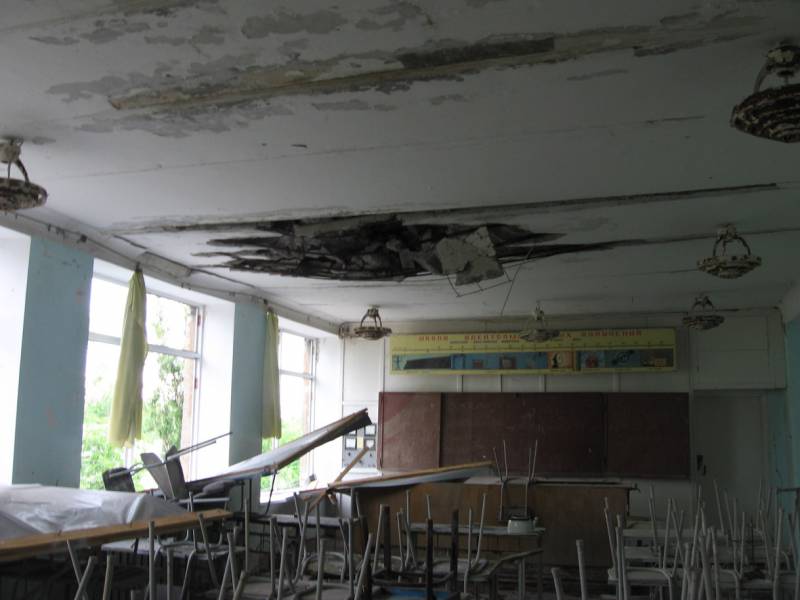
International law establishes restrictions on the use of permitted weapons and methods of warfare – it is forbidden to attack or bombard unprotected cities, villages, residential buildings or structures, including clinics, hospitals, provided that these buildings and cities do not simultaneously serve military purposes. Based on the results of the collection and analysis of information in Donbass, KHPG monitors concluded that during the hostilities, weapons with indiscriminate effect, in particular rocket system of volley fire GRAD, were repeatedly used to attack entire settlements, educational and medical institutions located in their territories. This shelling can be classified as indiscriminate attacks. On the territory of educational and medical institutions, military equipment and armed persons were also repeatedly deployed, and psychological pressure was regularly put on medical personnel (especially in uncontrolled territories).
Between April 2014 and June 2018, we recorded and documented numerous facts of massive indiscriminate shelling. As a result of such attacks, we documented and included in KHPG data base 22,503 facts of damage to residential buildings and infrastructure in settlements in both the territory controlled by the government and the territory controlled by the so-called LNR and DNR.[39]
According to a number of studies conducted by international and Ukrainian human rights organizations, a third of all medical institutions in Donbass were damaged as a result of hostilities. The hospitals most affected were in Donetsk – 57 medical institutions, and in Horlivka – 18. According to WHO, since the beginning of the conflict, 160 medical institutions on both sides of the contact line were hit by the shelling. 130 of them either partially or completely stopped operating. Directors of more than 400 hospitals report that they are sorely lacking medicines.[40]
During 2014-2017, KHPG monitors recorded incidents of seizures and attacks on 58 educational institutions in 20 cities of Donetsk region and 21 educational institutions in 14 cities of Luhansk region. Representatives of both legal and illegal armed groups were noticed therein[41].
42 bridges were destroyed or damaged.

It should be noted that, regardless of which party to the conflict was involved in the shelling, or in such actions that led to damage or blocking of the work of the institutions, all such cases should be investigated, and the culprits should be brought to justice.
As a result of hostilities, places of worship were significantly affected. In total, 62 Orthodox churches were destroyed during the armed conflict in Donetsk region alone, and 10 churches – in Luhansk region. Ten churches were destroyed to the ground. Three Orthodox clergymen were killed, five were injured. In addition, Greek Catholic and Protestant churches, as well as one Muslim mosque, were damaged during the armed conflict.[42]
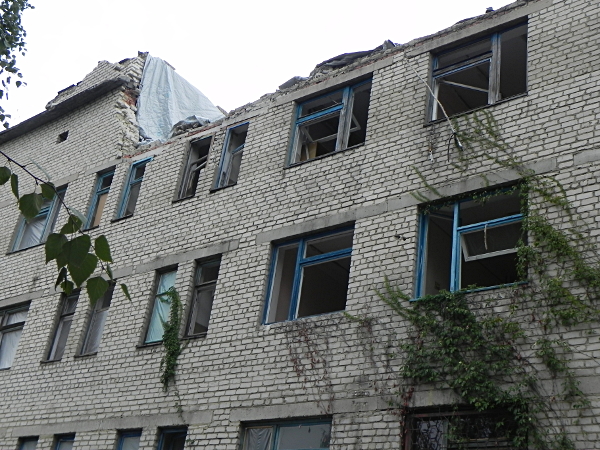
According to the data of Luhansk regional administration, about 9,000 objects were destroyed in the government-controlled territory in Luhansk region, including: 7,000 residential buildings, 32 bridges, 94 medical institutions, 113 educational institutions, 14 industrial objects, 79 cultural and sports institutions.[43]
According to the data of Donetsk regional military civil administration, more than 7,000 residential buildings, 21 medical institutions, 27 secondary schools, 13 preschool institutions, 7 vocational technical schools, 14 cultural institutions and 19 industrial objects were destroyed on the territory controlled by the government in Donetsk region.[44]
Overwhelming majority of military actions and attacks on civilians took place in the settlements located directly on the contact line or in its close proximity.
The provided data shows widespread and large-scale nature of crimes that were scattered over the entire territory of the conflict, as well as serious consequences of such crimes. A large region of Ukraine became affected by those crimes, with its population becoming the victims.
4.10. Internally displaced persons
As a result of hostilities, approximately 3 million people were forced to flee their places of permanent residence due to the risk of death. More than 460 thousand fled to Russia, 360 thousand of them received citizenship of the Russian Federation by a simplified procedure, approximately 77 thousand retained Ukrainian citizenship[45]. More than 1.7 million people registered as IDPs, approximately 0.5-0.7 million immigrants did not register. Today in Ukraine there are more than 1.43 million registered IDPs[46], about 600 thousand of which are pensioners. Most of them actually live in territory not controlled by the government and come every two months to undergo the procedures by which the government determined the receipt of a pension. According to various estimates, from 500 to 800 thousand IDPs are currently permanently residing in the territory controlled by the government. To date, the Ukrainian government has not abolished the discriminatory condition on the compulsory registration of pensioners residing in territories not controlled by the government, such as IDPs[47].
Inspectors of territorial departments of social protection check whether pensioners live at the address specified during registration of IDPs. And if they don’t find it, they can deprive a person of a pension. The practice of suspending the payment of pensions is widespread[48] and it is not easy to restore the receipt of a pension. The scale of the suspension of the payment of pensions is indicated by the following data of the HRMM: «In April 2017, 200,200 pensions were suspended. As of April 2018, 123,500 individuals had applied for reinstatement, which was granted to 91,600 pensioners. OHCHR notes that a significant number of pensioners had their pensions suspended due to the verification and identification procedure linking pensions to IDP registration.»[49]
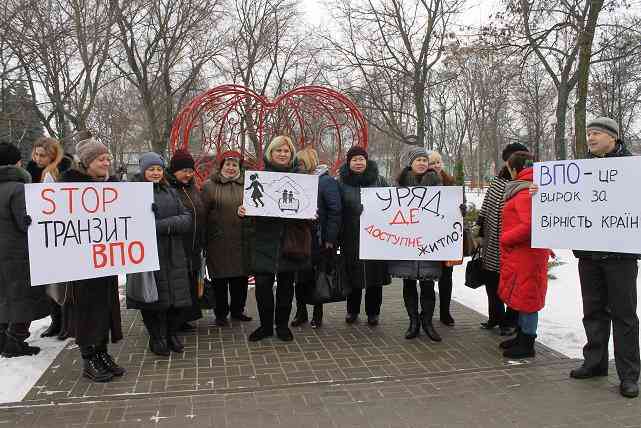
A significant part of the IDPs returned back to uncontrolled territory, as they could not find work with wages that allowed them to rent housing. State compensation for the payment of utility bills for migrants amounted to 442 UAH for workable and 884 UAH for others. To date, the government has increased the amount by 1 IDP to 1,000 UAH. The state has not yet developed a systematic approach to solving the housing problem of IDPs.
One of the painful problems is the small number of CP on CL: 4 in the Donetsk region, 2 in the Lugansk region (one of them still does not work, the second one is on foot). The lack of the necessary infrastructure and the large number of people crossing the CL led to the fact that in the period 2015-2018, huge queues accumulated on the CP on both sides. People crossing the CP said that sometimes the CL crossing stretched for two, or even three days. Numerous deaths were recorded in queues at the CP - heart attacks, frostbite, gunshot wounds, mine injuries. In 2018 alone, more than 50 people died at the CP, and the total number of deaths in CL during the conflict is close to two hundred. In 2019, the situation improved thanks to the arrangement of all CP at the expense of international organizations, and the queues crossing the CL from the territory controlled by the government significantly decreased.
For almost 6 years of the military conflict, IDPs were not able to take part in the election of parliamentarians in majority districts in 2014 and 2019; were deprived of the opportunity to participate in the elections of deputies of local councils in 2015, as well as in the current elections in the new united territorial communities. At the end of 2019, the Verkhovna Rada adopted a new election code[50], which amended the rules restricting the electoral rights of immigrants. In all subsequent elections, IDPs will be able to exercise their voting rights without any restrictions.

5. Prerequisites for moving beyond a preliminary examination and initiating an investigation
In deciding whether a “reasonable basis” exists for initiating an investigation, the ICC Prosecutor considers whether (a) the information available to the Prosecutor provides a reasonable basis to believe that a crime within the jurisdiction of the Court has been or is being committed; (b) the case is or would be inadmissible under Article 17 of the Statute; and (c) taking into account the gravity of the crime and the interests of justice, there are nonetheless substantial reasons to believe that an investigation would not serve the interests of justice.[51] At this stage, the applicable evidentiary standard is that of “reasonable basis to believe”, which means that it is only necessary for the Pre-Trial Chamber to arrive at the conclusion that “a sensible or reasonable justification for a belief” that the crimes within the jurisdiction of the Court have been committed exists.[52]
Below we elaborate on the fulfilment of the abovementioned prerequisites necessary for the initiation of an investigation and call upon the ICC Prosecutor to seek the Pre-Trial’s Chamber authorization of an investigation into the situation of Ukraine.
5.1. Jurisdiction
Ukraine is not a State Party to the Rome Statute.[53] It invoked Article 12(3) of the Rome Statute twice, having accepted the ad hoc jurisdiction of the ICC with respect to the Maidan events (Declaration I)[54] and the alleged crimes committed on the territory of eastern Ukraine and Crimea (Declaration II).[55] On 29 September 2015, based on Ukraine’s second declaration under Article 12(3), the ICC Prosecutor announced the extension of the preliminary examination of the situation in Ukraine to include alleged crimes occurring after 20 February 2014 in Crimea and eastern Ukraine.[56] Therefore, Ukraine’s second declaration accepting the ad hoc jurisdiction of the ICC provides the jurisdictional basis for the ICC Prosecutor to examine the alleged crimes enumerated in this communication.
As for ratione temporis, the second declaration covers alleged crimes committed on the territory of Ukraine from 20 February 2014 onwards.[57] Therefore, ongoing violations qualifying as war crimes or crimes against humanity committed in eastern Ukraine and Crimea fall within the jurisdiction of the ICC. The crimes detailed in this Communication include alleged crimes committed from April 2014 onwards, thus falling within the jurisdiction of the ICC.
The crimes enumerated in this communication fall within the subject matter (ratione materiae) jurisdiction of the ICC, as we submit, they qualify as war crimes and crimes against humanity within the meaning of Article 7 and Article 8 of the Rome Statute. Further, the crimes were committed on the territory of Ukraine by the Ukrainian and Russian nationals alike. The parties involved in the commission of crimes include (1) the members of IAF that were often acting upon support or direct participation of Russian military forces, (2) the members of LAF, including the divisions of UAF, MIA, voluntary battalions and SSU, and (3) the members of Russian military forces or Russian special forces.
Although Russia is a not State Party to the Rome Statute, it nationals may nevertheless be held accountable, given that the alleged crimes took place on the territory of Ukraine that accepted the ad hoc jurisdiction of the ICC within the given timeframe.

5.2. Admissibility
Pursuant to Article 17(1) of the Rome Statute, admissibility requires an assessment of complementarity (subparagraphs (a)-(c)) and gravity (subparagraph (d)).[58] The ICC jurisprudence clarifies that there is not yet a ‘case’ at the preliminary examination stage, which comprises an identified set of incidents, suspects and conduct. Therefore, the consideration of admissibility (complementarity and gravity) takes into account “potential cases that could be identified in the course of the preliminary examination based on the information available and that would likely arise from an investigation into the situation”.[59] In other words, admissibility at the situation phase is assessed against certain criteria defining a ‘potential case’ such as: “(i) the groups of persons involved that are likely to be the focus of an investigation for the purpose of shaping the future case(s); and (ii) the crimes within the jurisdiction of the Court allegedly committed during the incidents that are likely to be the focus of an investigation for the purpose of shaping the future case(s).”[60]
According to Article 17(1) of the Rome Statute, the Court shall determine that a case is inadmissible where: (a) the case is being investigated or prosecuted by a State which has jurisdiction over it, unless the State is unwilling or unable genuinely to carry out the investigation or prosecution; (b) the case has been investigated by a State which has jurisdiction over it and the State has decided not to prosecute the person concerned, unless the decision resulted from the unwillingness or inability of the State genuinely to prosecute; (c) The person concerned has already been tried for conduct which is the subject of the complaint, and a trial by the Court is not permitted under article 20, paragraph 3; (d) The case is not of sufficient gravity to justify further action by the Court.
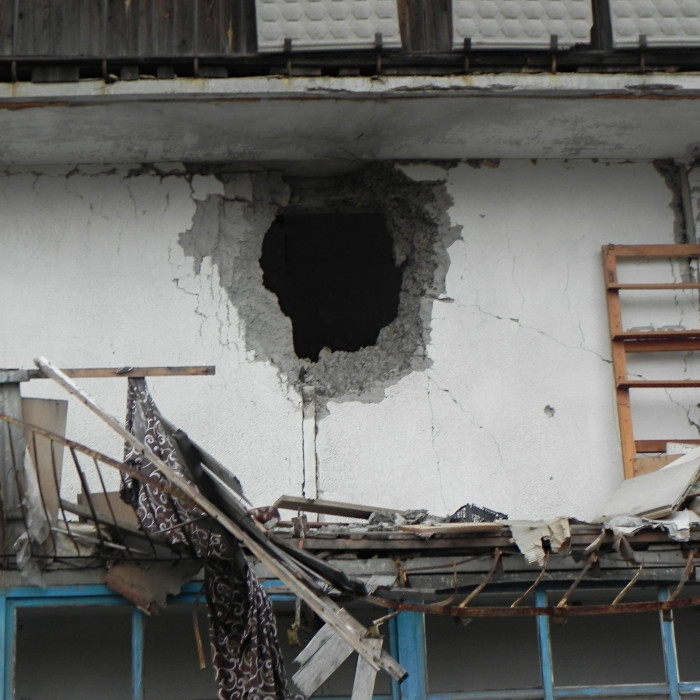
We submit in this Communication that there are no factors that would make potential cases arising out of the situation in eastern Ukraine inadmissible before the ICC.
5.2.1. Complementarity
The ICC operates on the basis of the principle of complementarity, which means its jurisdiction is only triggered when national authorities are unwilling or unable to prosecute the crimes falling within the jurisdiction of the ICC. Pursuant to Articles 53(1)(b) and 17(1)(a)-(c) of the Rome Statute, the complementarity assessment relates to whether genuine investigations and prosecutions have been or are being conducted in the State concerned in respect of the case(s) identified by the Office of the Prosecutor.
As expounded by the Appeals Chamber, the assessment of complementarity is a twofold test. The first limb of the test in assessing complementarity is whether there are or have been any relevant national investigations or prosecutions. The absence of national proceedings, i.e. domestic inactivity, is sufficient in itself to make the case admissible before the ICC. If the first part of the test is answered in affirmative, then the Court proceeds to an assessment of unwillingness and inability as set out in Article 17 of Rome Statute.[61]
Pursuant to Article 17(2) of the Rome Statute, for the purpose of assessing unwillingness to investigate or prosecute, the Office of the Prosecutor shall consider whether (a) the proceedings were or are being undertaken for the purpose of shielding the person concerned from criminal responsibility for crimes within the ICC jurisdiction, (b) there has been an unjustified delay in the proceedings which in the circumstances is inconsistent with an intent to bring the person concerned to justice, and (c) the proceedings were or are not conducted independently or impartially and in a manner consistent with an intent to bring the person concerned to justice. In so doing, the Office may consider a number of factors. More detailed explanation as to what constitutes ‘unwillingness’ within the meaning of the Rome Statute is provided in the ICC Policy Paper on Preliminary examinations (2013).
Pursuant to Article 17(3) of the Rome Statute, in order to determine inability in a particular case, the Court shall consider whether, due to a total or substantial collapse or unavailability of its national judicial system, the State is unable to obtain the accused or the necessary evidence and testimony or otherwise unable to carry out its proceedings. More detailed explanation as to what constitutes ‘inability’ within the meaning of the Rome Statute is provided in the ICC Policy Paper on Preliminary examinations (2013).
Notwithstanding some national proceedings having taken place with respect to the crimes committed in the context of the armed conflict in eastern Ukraine, we submit that Ukraine is both unwilling and unable to investigate and prosecute the crimes.
5.2.1.1. Unwillingness of Ukrainian state authorities to investigate or prosecute the crimes
The Ukrainian national authorities clearly demonstrate their unwillingness to investigate and prosecute the crimes committed by LAF. It especially concerns the cases, in which potential perpetrators are the staff employees of SSU.[62] The investigative bodies are also unwilling to recognize the victims of violence inflicted by the members of LAF, even in the presence of clear signs of violence e.g. bodily harm (Annex 25).
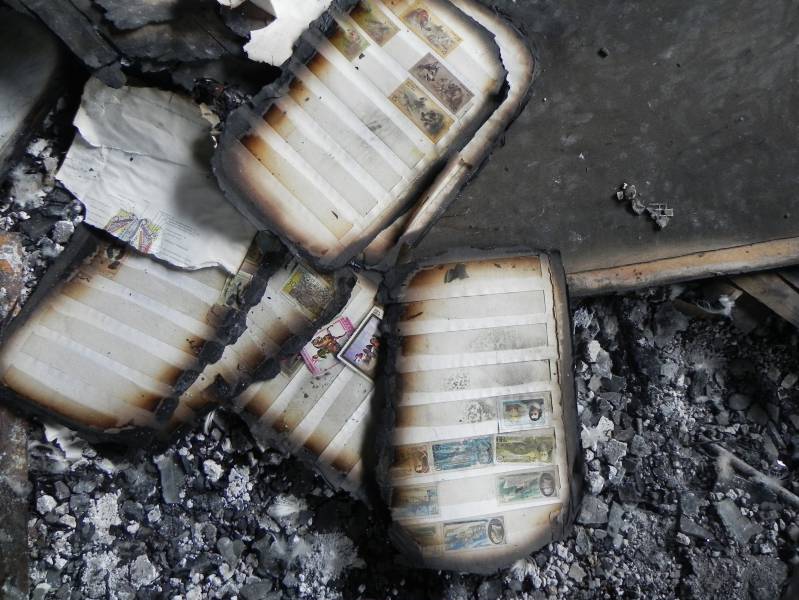
At present, it is very unlikely to expect the General Prosecutor’s Office of Ukraine to initiate criminal proceedings with respect to unlawful actions committed by the staff members of SSU. The Head of SSU, Mr. Vasyl Hrytsak, was appointed by President Poroshenko as the Head of the SSU Anti-Terrorism Centre in July 2014, which was established by law for coordination of ATO in eastern Ukraine, management of anti-terrorist activities, and coordination of all state organs involved in combating anti-terrorist activities.[63] As of July 2015, Mr. Hrytsak was appointed almost unanimously by the Ukrainian parliamentarians as the Head of SSU upon the submission of President Poroshenko. It appears that Mr. Hrytsak, by virtue of his position, is the most responsible person for the actions of the SSU staff in ATO, as well as the actions of those who pursued persons for their alleged commission of the crimes of terrorism, and crimes against national security and territorial integrity of the State. Notwithstanding the implication of SSU leadership in the commission of the crimes, it is very unlikely that the General Prosecutor’s Office of Ukraine will be willing to initiate criminal proceedings.
All crimes, in particular unlawful deprivation of liberty and ill-treatment committed by the staff members of SSU, have not been investigated. Moreover, the very fact of the commission of such crimes has been denied by SSU (see above subsections 5.3, 5.4 and annex 9). In those very few cases, in which the members of LAF are held accountable for the crimes committed in the context of the armed conflict, the charges and outcomes do not correspond to the gravity and magnitude of those crimes. In particular, the members of the battalion ‘Tornado’ were sentenced to the imprisonment terms between 5 and 11 years respectively, which was further appealed by both the defence and the prosecution.[64] The criminal proceedings involving the alleged crimes committed by the members of battalion ‘Aydar’ are still ongoing.[65] In light of the above, there is a reasonable basis to believe that the members of LAF involved in the commission of the crimes, as detailed above, will not be fairly punished within the Ukrainian judicial system.
As for criminal proceedings involving the members of IAF, the Ukrainian law enforcement agencies exhibit a low activity in initiating such cases, pointing in the direction of unwillingness to investigate them. In 100 cases supported by lawyers of our organization, the Ukrainian law enforcement agencies failed to start an investigation following the commission of crimes, and even failed to act on the requests of victims to commence an investigation.[66] As a result, many victims complained of inaction on the part of the law enforcement agencies to an investigating judge, thereby forcing the law enforcement agencies to commence a pre-trial investigation by the court order (see Annex 6, pp 2-3; Annex 7, pp 5-6; Annex 8, pp 3-4). After initiating such criminal proceedings, investigators refused to grant the victims of the crimes a formal status of a victim, thus respectively denying them and their lawyers’ access to case materials at the pre-trial investigation stage (see Annex 6, p. 6; Annex 7, p. 10; Annex 8, p. 8). In addition, the law enforcement agencies failed to carry out the necessary investigative activities, such as the examination of the scene of the crime; collecting witness testimony; and in the case of receiving requests to carry out necessary investigative activities, they either did not react or conducted only some investigative measures (often by redirecting these requests to other investigative bodies). Further, there were no special investigative measures carried out which were relevant to the conduct of hostilities (e.g. shelling direction, distance and impact; types of weaponry/military vehicles used etc.). In the cases where the requests on conducting investigative measures had been met, such measures were either ineffective and of no evidentiary value, or were postponed for an indefinite period of time (see Annex 14, p. 8; Annex 51).
In 2016-2017, the lawyers of KHPG submitted multiple requests on initiating criminal proceedings, forcing SSU to initiate 255 criminal cases upon the facts of death or injury sustained by the civilians in the government controlled territory; destruction of property due to shelling attacks; enforced disappearances etc. Notwithstanding those requests, the investigative measures have not been carried out and the investigations proved to be ineffective (see Annex 10, section 10). Having exhausted all national domestic remedies in 115 such cases, the lawyers of KHPG submitted individual applications to ECtHR against Ukraine and Russia, substantiating the violations of Articles 2 or 3 of ECHR through inaction on the part of the Ukrainian state. This adds to unwillingness on the part of the Ukrainian law enforcement agencies to investigate the crimes committed by IAF.
As for the outcome of applications submitted by the victims to the respective bodies of RF regarding the commission of crimes, they received a standard reply of the Investigative Committee of RF that such applications were re-directed to the competent national authorities of Ukraine in accordance with Minsk Convention on Legal Assistance and Legal Relations in Civil, Family and Criminal Matters of 22 January 1993 in order to “verify the allegations as provided in the application” (see Annex 6, pp. 7-9; Annex 7 pp. 11-14; Annex 8, p. 9-10; Annex 12, pp 21-22; Annex 14, pp. 10-11, Annex 15 p.8). Therefore, the authorities of RF refused to investigate the crimes upon the victims’ applications.
Many crimes committed in the context of the armed conflict in eastern Ukraine appear to be incorrectly qualified under the umbrella of terrorist offences under national law. In fact, there is a significant increase in the number of criminal cases initiated under Article 258 of CC: a huge leap from only 4 cases in 2013 to 1,499 (2014), 1,257 (2015), 1,865 (2016) and 1,385 (2017).[67] The majority of crimes qualified under Article 258 relate to the actions of the members of IAF in the context of the seizure of control over parts of territories in the Donetsk and Luhansk regions and ensuing armed conflict. The Ukrainian government does not recognize directly that it is engaged in the armed conflict eastern Ukraine, having officially declared that it is conducting anti-terrorism operation in eastern Ukraine.
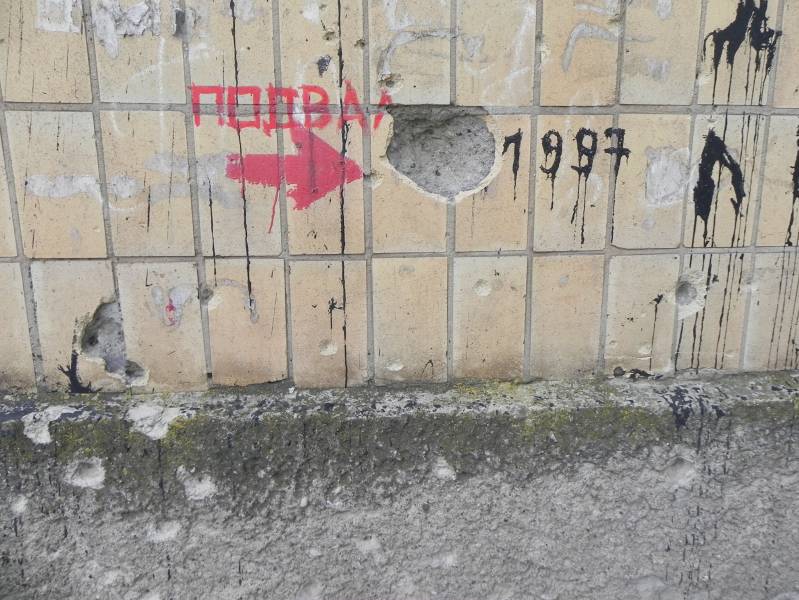
Despite such a great number of criminal proceedings initiated under Article 258 of CC, during the period between 2014 and 2017, only 72 pre-trial investigations ended with directing those cases to courts. This corresponds to 1% in relation to a total number of criminal proceedings initiated under Article 258 (6,044).[68]
According to the statistics provided by the General Prosecutor’s Office of Ukraine, under the Article 127 of CC (‘torture’), 54 criminal cases were initiated in 2014 and 73 criminal cases were initiated in 2015.[69] Obviously, such statistics is completely disproportionate to a number of reported incidents of torture and ill-treatment committed in the context of the armed conflict in eastern Ukraine. As for the crimes of ill-treatment of the prisoners of war (Art 433 of CC), violence against the civilian population during the conflict (Art. 434 of the CC), violations of the laws and customs of war (Art. 438 of CC), such criminal proceedings are almost non-existent.[70]
5.2.1.2. Inability of Ukrainian state authorities to investigate or prosecute the crimes
One of the main factors that hinders ability of the Ukrainian national authorities to investigate and prosecute crimes committed in the context of the armed conflict in eastern Ukraine is the absence of relevant provisions criminalizing core international crimes in the Criminal Code of Ukraine, with an exception of broadly formulated Art 438 on war crimes. Many crimes that could potentially fall within the ICC jurisdiction are qualified in Ukraine as the crimes of terrorism. Hence, even if convicted, those responsible will not fully bear responsibility for their actions, since the charges levied against them do not accurately reflect the nature of the crimes they had committed.
Another major factor hindering ability of the Ukrainian national authorities to investigate and prosecute crimes is the absence of access to the non-government controlled territories, which means that they cannot effectively conduct investigations on those territories. More specifically, the Ukrainian national authorities cannot carry out the necessary investigative actions on such territories, such as examining a crime scene; questioning suspects and/or witnesses; collecting material evidence, conducting the necessary expertise. This excludes the possibility to conduct a full investigation and bring to justice the members of IAF, as they live on the other side of the contact line, which makes it impossible to execute arrest warrants against them. It is impossible to declare war criminals on the international wanted list, since Article 3 of the Interpol Charter prohibits this. Even Girkin-Strelkov has not been put on the international wanted list.
Law No. 0892, adopted on first reading in July 2019, must be adopted. It should be noted that in accordance with article 4 of the Criminal Code of Ukraine, prosecution is carried out in accordance with the law in force at the time the crime was committed. If Bill No. 0892 will be passed, it will only apply to crimes committed after it takes effect. Consequently, articles 4,5 of the Criminal Code must also be amended to ensure the retroactive application of criminal liability to crimes against humanity. But the Ukraine’s Constitution in Article 58 strictly affirms the principle that the law cannot have retroactive force. So, in order to have a retroactive force, Article 58 of the Ukraine’s Constitution needs to be changed as follows:
1. Laws and other normative legal acts have no retroactive force, except in cases where they mitigate or annul the responsibility of a person.
2. No one shall bear responsibility for acts that, at the time they were committed, were not deemed by law to be an offence.
3. This article shall not obstruct court examination and punishment of any person for any action or failure to act which at the time it was committed constituted a crime or criminal offence in accordance with general principles of law recognized by civilized nations.
5.2.2. Gravity
As clarified in the jurisprudence of the ICC, “(i) a gravity determination involves a generic assessment (general in nature and compatible with the fact that an investigation is yet to be opened) of whether the groups of persons that are likely to form the object of the investigation capture those who may bear the greatest responsibility for the alleged crimes committed; and (ii) gravity must be assessed from both a quantitative and qualitative viewpoint and factors such as nature, scale and manner of commission of the alleged crimes, as well as their impact on victims are indicators of the gravity of a given case”.[71]
The scale of the crimes may be assessed in light of, inter alia, the number of direct and indirect victims, the extent of the damage caused by the crimes, in particular the bodily or psychological harm caused to the victims and their families, or their geographical or temporal spread.[72] The scale of crimes in eastern Ukraine is vast, with more than 3,000 civilians reported dead, 7,000 injured, and thousands of people subjected to torture or ill-treatment (often in the context of unlawful detention).[73] Residential buildings, houses and objects of critical infrastructure (e.g. hospitals, schools) have been destroyed and deprived civilians of leading a normal life, with many of them forced to flee the conflict affected area. The number of IDPs on 16 April 2018 was near1.5 million persons.[74]
The nature of the crimes refers to the specific elements of each offence.[75] This communication details particularly violent crimes committed in the context of the conflict in eastern Ukraine, including murder, torture and ill-treatment in combination with unlawful detention, outrages upon personal dignity and attacks on the civilian population and civil objects, which we submit merit particular attention of the ICC Office of the Prosecutor.
The manner of commission of the crimes may be assessed in light of, inter alia, the means employed to execute the crime, the degree of participation and intent of the perpetrator, the extent to which the crimes were systematic or result from a plan or organised policy or otherwise resulted from the abuse of power or official capacity, and elements of particular cruelty.[76] The manner in which the crimes were committed in eastern Ukraine point towards the existence of an organised policy to commit such crimes against civilians (particularly those who were perceived to be disloyal by IAF and LAF) and captive members of various armed groups, which is evidenced by a high degree of organization of the places of unlawful detention and systematic use of torture and ill-treatment against the detainees. Further, the manner in which shelling of populated areas had taken place demonstrates a complete disregard towards the life of civilians, failure to distinguish between military and non-military objects in breach of the most fundamental principles of proportionality, distinction and precaution under IHL.
The impact of crimes may be assessed in light of, inter alia, the sufferings endured by the victims and their increased vulnerability; the terror subsequently instilled, or the social, economic and environmental damage inflicted on the affected communities.[77] As detailed in our communication, many victims of crimes endured serious physical and mental suffering as the direct outcome of the crimes committed by IAF and LAF alike. This particularly concerns victims who were subjected to torture, ill-treatment and outrages upon personal dignity in the context of unlawful detention in inhuman conditions. This communication also referred to numerous instances of psychological abuse suffered by the victims who were subjected to mock executions; death and rape threats directed not only at them, but also at their family members; forced to witness torture or killing of other detainees; forced to collect and dismember dead bodies etc. Surviving victims of crimes and their family members will have to cope with long lasting effects of the ordeal they had gone through during many years to come, with many of them exhibiting signs of PTSD, depression and other psychological disorders, as well as suffering from serious health problems.
The civilians who resided in the areas subjected to shelling lived in the constant atmosphere of terror and fear. The conflict has completely transformed the social fabric of the affected communities that were judged on the basis of their loyalty to the self-proclaimed republics. The damage to the critical infrastructure objects and loss of homes deprived civilians of leading a normal life in the conflict affected areas, leading to a dramatic increase of a number of IDPs who were forced to abandon their communities.
5.3. Interests of justice
The interests of justice under article 53(1)(c) is a potentially countervailing criterion that may give a reason for the ICC Prosecutor not to proceed. As such, the Prosecutor is not required to establish that an investigation serves the interests of justice. Rather, the Office of the Prosecutor “will proceed unless there are specific circumstances which provide substantial reasons to believe that the interests of justice are not served by an investigation at that time”.[78] In fact, there is a strong presumption in favor of the interests of justice criterion, provided the criteria of jurisdiction and admissibility have been satisfied.
Taken into consideration the gravity of the crimes described in this communication, and their impact on the victims, affected communities in eastern Ukraine and the entire population of Ukraine, there is nothing to suggest that opening an investigation would not be interests of justice.
6. Conclusions
We submit that all the prerequisites for initiating an investigation into the situation in Ukraine under Article 53(1)(a)-(c) have been met. Therefore, we urge the ICC Office of the Prosecutor to open an investigation as soon as possible in order to address injustice and impunity gap in eastern Ukraine for the benefit of many victims of crimes and their family members.
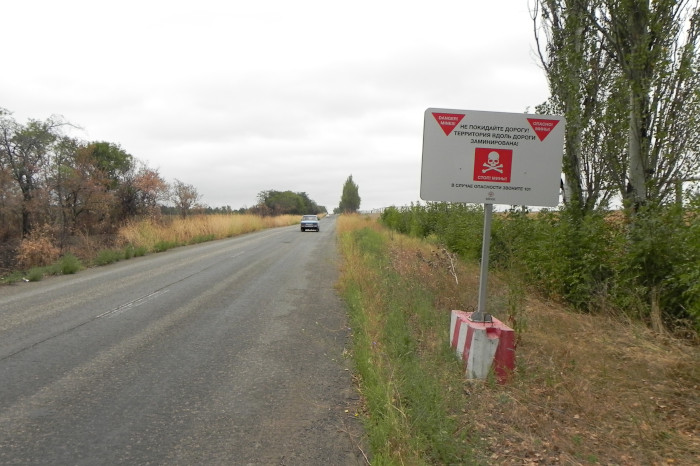
[1] ‘Illegal armed formations’ is a cumulative term that signifies the pro-Russian separatist (anti-government) groups operating in eastern Ukraine.
[2] ‘Lawful armed formations’ is a cumulative term that signifies the Ukrainian armed forces and law enforcement agencies (e.g. National police, National Guard, Security service, etc.).
[3] Violent Crimes Committed During the Armed Conflict in Eastern Ukraine between 2014–2018, section 5, http://khpg.org/en/index.php?id=1543997604
[4] Report on the human rights situation in Ukraine from 16 August to 15 November 2019, https://ohchr.org/EN/Countries/ENACARegion/Pages/UAReports.aspx
[5] Report the loss of civilian population, the destruction of housing and infrastructure as a result of the armed conflict in eastern Ukraine, p.25, http://khpg.org/en/index.php?id=1538471203
[6] http://khpg.org/index.php?id=1540541285
[7] http://old.npu.gov.ua/mvs/control/ main/uk/publish/article/1141400
[8] https://dialog.ua/ukraine/139595_1513348177
[9] http://library.khpg.org/index.php?id=1574017356, p. 15.
[10] Ibid, p. 30-31.
[11] UN OHCHR, Reports on the human rights situation in Ukraine. December 2014 to 15 February 2015, 15 February 2015, пар.33, 34, <https://ohchr.org/Documents/Countries/UA/9thOHCHRreportUkraine.pdf.
[12] UN OHCHR, Reports on the human rights situation in Ukraine, 15 July 2014,
[13] Ibid para. 40.
[14] Concerning these data of the NPU and MMP see. https://radiosvoboda.org/a/news/29378209.html
[15] Violent Crimes Committed During the Armed Conflict in Eastern Ukraine between 2014–2018, http://khpg.org/en/index.php?id=1543997604
[16] «Підвали Донбасу. Жорстока правда про полон. Ті, що пережили пекло: Свідчення жертв ув’язнень на Донбасі» [Basements of the Donbas. The cruel truth about captivity. Those who survived the hell: Evidence of the victims of imprisonment in Donbass], Coalition “Justice for Peace in Donbas” (online),, 13 December 2016,
[17] UN OHCHR, Reports on the human rights situation in Ukraine. 15 July 2014,
[18] “про порушення прав людини в зоні збройного конфлікту в Луганській області. Станиця Луганська ” [Reports on the human rights violations the zone of armed conflict in Luhansk oblast. Stanitsa Luhanska sector], Kharkiv, 2016, sh.21, <files/docs/1530865045.pdf>.
[19] «Підвали Донбасу. Жорстока правда про полон. Ті, що пережили пекло: Свідчення жертв ув’язнень на Донбасі» [Basements of the Donbas. The cruel truth about captivity. Those who survived the hell: Evidence of the victims of imprisonment in Donbass], Coalition “Justice for Peace in Donbas” (online), 13 December 2016, http://khpg.org/1481630335, p. 22 (translation from Russian).
[20]Yanina Smelyanska, «По місцях «бойової слави» батальйону «Торнадо». Фоторепортаж» [Places of "military glory" of "Tornado" battalion. Photo report], KHPG (online), <http://khpg.org/1480948008>.
[21] “Звіти про стан прав людини в Україні” [Reports on the human rights situation in Ukraine.] 17 August 2014, 29 August 2014, пар.46,<https://ohchr.org/Documents/Countries/UA/UkraineReport28August2014.pdf>.
[22] «Незаконні затримання та катування, здійснені українською стороною в зоні збройного конфлікту на Сході України» [Illegal arrests and torture committed by the Ukrainian side in the zone of armed conflict in the East of Ukraine], 2 June 2017, <http://khpg.org/1496406846.>.
[23] UN OHCHR, Reports on the human rights situation in Ukraine. 17 August 2014, 29 August 2014, para.40, <https://ohchr.org/Documents/Countries/UA/UkraineReport28August2014.pdf>.
[24] Report on the human rights situation in Ukraine. 16 February to 15 May 2016], para.31, <https://ohchr.org/Documents/Countries/UA/Ukraine_14th_HRMMU_Report_UKRANIAN.pdf>
[25] «The 14th HRMMU report on the human rights situation in Ukraine 16 February – 15 May 2016», HRMMU (online),
[26] СБУ повідомила кількість звільнених українських заручників [The SSBU reported on the number of released Ukrainian hostages] TrueUa (online), 6 April 2018 <https://trueua.info/news/sbu-povidomila-kilkist-zvilnenih-ukrainskih-zaruchnikiv>
[27] Катували та ґвалтували: Геращенко розкрила діагнози екс-полонених на Донбасі [Tortured and raped: Gerashchenko revealed the diagnoses of ex-prisoners in the Donbas], Fakty.ictv.ua (online), 23 July 2018 р.,
[28] The 14th HRMMU report on the human rights situation in Ukraine 16 February – 15 May 2016, par. 12 –
[29] «Illegal arrests and torture committed by the Ukrainian side in the zone of the armed conflict in the East of Ukraine: Information report of the Ukrainian Helsinki Human Rights Union, the Kharkiv Human Rights Protection Group and a non-governmental organization Truth Hounds», UHHRU (online),
[30]
[31] The Rights of Convicts Detained in the ORDLO. – Kharkiv: LLB “Human Rights Publisher”, 2018. – 80 p. http://khpg. org/files/docs/1539109506.pdf
[32] Ibid, p. 29-34.
[33] Ibid, p. 32-33.
[34] Violent Crimes Committed During the Armed Conflict in Eastern Ukraine between 2014–2018. – Kharkiv: LLB “Human Rights Publisher”, 2018. — 112 p, pages 84-92, http://khpg.org/ files/docs/1552984577.pdf
[35] The report about the losses of the civilian population, destructions of the households and infrastructure as a result of the armed conflict in the east of Ukraine. / Yuriy Aseev, Anastasiya Yegorova, Stanislav Pylayev, Yana Smelyanska, Yevgeniy Zakharov. – Kharkiv, Human Rights Publisher, 2018. – 118 pages, p. 27-30. http://khpg.org/en/ index.php?id=1538471203
[36] 2018 Humanitarian Response Plan, available at the link https://humanitarianresponse.info/en/operations/ ukraine/document/ukraine-2018-humanitarian-response-plan-hrp
[37] https://ohchr.org/Documents/ Countries/UA/ReportUkraineFevMay2018_UKRAINIAN.pdf, para. 34.
[38] http://khpg.org/en/index. php?id=1538471203
[39] The report about the losses of the civilian population, destructions of the households and infrastructure as a result of the armed conflict in the east of Ukraine. / Yuriy Aseev, Anastasiya Yegorova, Stanislav Pylayev, Yana Smelyanska, Yevgeniy Zakharov. – Kharkiv, Human Rights Publisher, 2018. – 118 pages, p.7. http://khpg.org/en/ index.php?id=1538471203
[40] Ibid, p.35.
[41] Ibid.
[42] Ibid.
[43] Ibid, p.31.
[44] Ibid, p.32.
[45] https://pnp.ru/social/chislo-obrashheniy-ukraincev-za-rossiyskim-grazhdanstvom-rastyot-ezhednevno.html
[46] https://msp.gov.ua/news/18074.html
[47] https://sud.ua/ru/news/ukraine/145422-pensii-zhitelyam-ordlo-zelenskiy-soobschil-o-vazhnykh-izmeneniyakh
[48] https://investigator.org.ua/publication/219956/
[49] Report on the human rights situation in Ukraine. 16 February to 15 May 2018, para. 40, https://ohchr.org/Documents/Countries/UA/ReportUkraineFev-May2018_EN.pdf
[50] https://zakon.rada.gov.ua/laws/main/396-IX
[51] Rome Statute, Art. 53(1)(a)(c).
[52] Pre-Trial Chamber II, Situation in the Republic of Kenya, Decision Pursuant to Article 15 of the Rome Statute on the Authorization of an Investigation into the Situation in the Republic of Kenya, ICC (online), 31 March 2010,
[53] Ukraine signed the Rome Statute on 20 January 2000. In 2016, the Ukrainian parliament adopted constitutional amendments, which provide that the provision on the exercise of the ICC jurisdiction will “enter into force three years after the date of the official publication of the act”. It is widely expected that the ratification process will take place in 2019.: Закон України ‘Про внесення змін до Конституції України (щодо правосуддя)’ (Law of Ukraine on Amending Article 124 of the Constitution of Ukraine (with regard to the recognition of the ICC Statute), Legislation of Ukraine (online), 2 June 2016, <http://zakon2.rada.gov.ua/laws/show/1401-19/paran6#n6>.
[54] Declaration of the Verkhovna Rada of Ukraine to the ICC on the recognition of the jurisdiction of the ICC by Ukraine over crimes against humanity, committed by senior officials of the state, which led to extremely grave consequences and mass murder of Ukrainian nationals during peaceful protests within the period 21 November 2013–22 February 2014 signed by the Chairperson of the Verkhovna Rada of Ukraine Oleksandr Turchynov, ICC (online), 25 February 2014, <https://icc-cpi.int/itemsDocuments/997/declarationVerkhovnaRadaEng.pdf>.
[55] Declaration of the Verkhovna Rada of Ukraine to the ICC on the recognition of the jurisdiction of the ICC by Ukraine over crimes against humanity and war crimes committed by senior officials of the Russian Federation and leaders of the Russian Federation and leaders of terrorist organizations “DPR” and “LPR”, which led to extremely grave consequences and mass murder of Ukrainian nationals signed by the Chairperson of the Verkhovna Rada of Ukraine V. Groysman, ICC (online), 4 February 2015,
[56] «ICC Prosecutor extends preliminary examination of the situation in Ukraine following second article 12(3) declaration», ICC Press Release (online), 29 September 2015,
[57] Declaration of the Verkhovna Rada of Ukraine to the ICC on the recognition of the jurisdiction of the ICC by Ukraine over crimes against humanity and war crimes committed by senior officials of the Russian Federation and leaders of the Russian Federation and leaders of terrorist organizations “DPR” and “LPR”, which led to extremely grave consequences and mass murder of Ukrainian nationals signed by the Chairperson of the Verkhovna Rada of Ukraine V. Groysman», ICC (online), 4 February 2015,
[58] Policy Paper on Preliminary Examinations», ICC (online), November 2013,
[59] Situation in the Republic of Kenya, Pre-Trial Chamber, Decision Pursuant to Article 15 of the Rome Statute on the Authorization of an Investigation into the Situation in the Republic of Kenya», ICC (online), 31 March 2010,
[60] Situation in the Republic of Kenya, Pre-Trial Chamber, Decision Pursuant to Article 15 of the Rome Statute on the Authorization of an Investigation into the Situation in the Republic of Kenya», ICC (online), 31 March 2010,
[61] Prosecutor v. Germain Katanga and Mathieu Ngudjolo Chui, Judgment on the Appeal of Mr Germain Katanga against the Oral Decision of Trial Chamber II of 12 June 2009 on the Admissibility of the Case, ICC (online), 25 September 2009, https://icc-cpi.int/CourtRecords/CR2009_06998.PDF, para. 78.
[62] «Report on the human rights situation in Ukraine 16 November 2015 to 15 February 2016», UN OHCHR (online), 3 March 2016,
«Report on the human rights situation in Ukraine 16 February 2015 to 15 May 2016», UN OHCHR (online), June 2016,
<https://ohchr.org/Documents/Countries/UA/Ukraine_14th_HRMMU_Report.pdf>, para.31;
«Report on the human rights situation in Ukraine 16 May to 15 August 2016», UN OHCR (online), 2016,
<https://ohchr.org/Documents/Countries/UA/Ukraine15thReport.pdf>, para.46.
[63] «Указ “Про призначення В. Грицака керівником Антитерористичного центру при Службі безпеки України”» [Decree on the appointment of V. Hrytsak as Head of the Antiterrorist Center in the Security Service of Ukraine], Legislation of Ukraine (online), 07 July 2014, <http://zakon.rada.gov.ua/laws/show/584/2014/conv>.
[64] «Суд виніс вирок у скандальній справі "Торнадо"» [The court delivered a verdict in the scandalous case "Tornado"], 24TV.ua (online), 07 April 2017,
[65] «Єдиний Державний реєстр судових рішень» [The Unified State Register of Judicial Decisions], REYESTR.COURT.GOV.UA (online),< http://reyestr.court.gov.ua/Review/71828345>.
[67] «Cтатистична інформація/ Офіційний веб-сайт Генеральної прокуратури України» [Official web site of the General Prosecutor’s Office of Ukraine/Statistical information], GP (online),
[68] Ibid.
[69] Ibid.
[70] Ibid.
[71] Kenya Art 15 Decision, para. 60-62; Cote d’Ivoire Art 15 Decision, para. 203-205.
[72] «Policy Paper on Preliminary Examinations», ICC (online), November 2013, https://icc-cpi.int/iccdocs/otp/otp-policy_paper_preliminary_examinations_2013-eng.pdf, para. 62.
[73] «Report on the human rights situation in Ukraine 16 February to 15 May 2018», UN OHCR (online), <https://ohchr.org/Documents/Countries/UA/ReportUkraineFev-May2018_EN.pdf>, para.16.
[74] «У Мінсоцполітики назвали число офіційно зареєстрованих переселенців» [The number of internally displaced persons in Ukraine is approaching 1.5 million people], RBC.ua (online), 16 April 2018,
[75] «Policy Paper on Preliminary Examinations», ICC (online), November 2013, https://icc-cpi.int/iccdocs/otp/otp-policy_paper_preliminary_examinations_2013-eng.pdf, para. 63.
[76] «Policy Paper on Preliminary Examinations», ICC (online), November 2013, https://icc-cpi.int/iccdocs/otp/otp-policy_paper_preliminary_examinations_2013-eng.pdf, para. 64.
[77] «Policy Paper on Preliminary Examinations», ICC (online), November 2013, https://icc-cpi.int/iccdocs/otp/otp-policy_paper_preliminary_examinations_2013-eng.pdf, para. 65.
[78] «Policy Paper on Preliminary Examinations», ICC (online), November 2013, https://icc-cpi.int/iccdocs/otp/otp-policy_paper_preliminary_examinations_2013-eng.pdf, para. 67.





